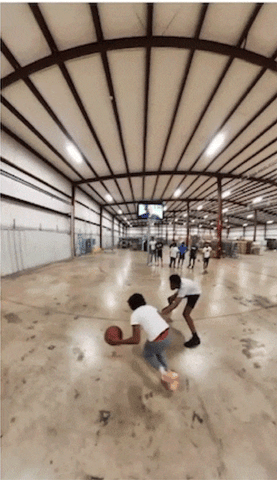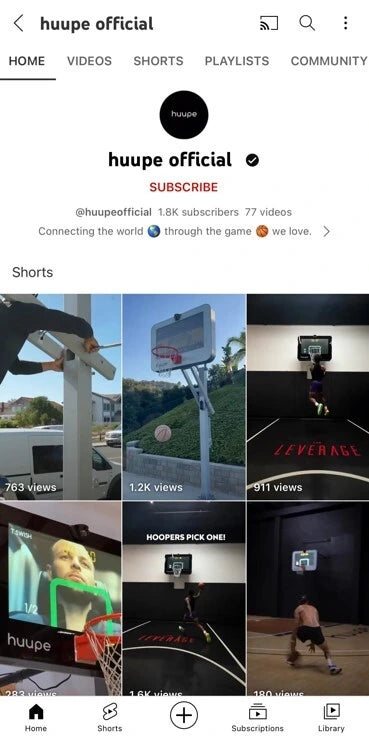
What Is Traveling in Basketball?
What Is Traveling in Basketball?
Basketball is an extremely fast-paced sport that generates a lot of excitement while requiring players to exhibit a combination of skill, athleticism, and strategic thinking. As with any other sport, the game of basketball has rules that govern the gameplay that ensures fairness and maintains integrity. One of the most commonly misunderstood and consistently debated topics is about the basketball rules involving traveling. The action of traveling occurs when a player violates certain movement restrictions while in the possession of the ball. Throughout this post, we will explore the concept of traveling in basketball, what defines it, different interpretations of the rule, and comprehending the lasting impact that it has on the game.
Defining a Travel Violation
According to the official basketball traveling violation, a player that is deemed to have traveled when they take an illegal number of steps without dribbling the ball properly. Specifically, a player on the court is only allowed to take one step while in the possession of the ball. After that step, they must shoot, dribble or pass the ball to avoid committing a travel. The traveling violation in basketball can be called in various situations throughout a game. Some examples of this could be when a player lifts, their pivot foot before they start to dribble, shuffles or drags their feet while holding the ball, takes more than two steps after stopping their dribble, and many others as well.
The traveling calls in basketball is not without having any controversy. The interpretation of this has been the subject of much debate among many coaches, fans, players, and officials. One of the primary areas of the contention is how strictly the rule is enforced. This could lead to players being able to get away from these calls. Sometimes a player could take an extra step before shooting or passing the ball. This would lead to the inconsistency accusations from the referees.
The Problem with The Call
Part of the problem with this lies in the speed and complexity of the modern game. Basketball is played at such a high tempo. This is where players often perform amazing skill moves and quick transitions. This can make it difficult for officials to spot every minor infraction accurately. This would result in certain players developing a reputation for benefiting from lenient interpretations, which can lead to frustration among opposing teams and their supporters.

Is 3 Steps a Travel in Basketball?
Something that we have heard asked often is questioning what are the proper amount of steps to take to not get called for a travel. Is a travel 3 or 2 steps? To simply answer it, in most basketball leagues that include the NBA, a player is allowed to take two steps after picking up their dribble before being able to release the ball to shoot or pass it up. When they pick up their dribble after the two steps, it is referred to as a “gather step” and it is a very common move in basketball. This means that after a player stops dribbling the ball, they are able to take one step with their non-pivot foot and proceed to take another step with the other foot that they chose to pivot from. If a player does proceed to take two two steps after the gather step without choosing to release the ball, it is generally considered a travel violation. This is something that the refs will call and the possession of tha ball would be awarded to the opposing team. It is very important to be cautious and note that the exact interpretation of the traveling call can vary based on the specific rules of different leagues or even other games because not all referees have the same watchful eye as other refs do to this rule. Following the gather step, a player is allowed to take one more step with their foot that is considered their non-pivot foot. This step is often referred to as the “one-two step.” After taking this step, they must make the decision of passing, shooting, or even starting a new dribble. Some leagues may choose to be more lenient, and others may be very strict on this rule. Please always be mindful to refer to the rules of the league that you are playing in or the one you choose to watch to get the most up-to-date information on the traveling violations in the basketball game that appeals to you.
Another aspect of this violation that confuses people when they are asking is dragging your feet a travel in basketball. When looking at this answer, please understand that this is something that is commonly mixed up with many basketball fans. That being said, dragging your feet can result in receiving a travel violation. This is especially true if it involves moving both of your feet without dribbling or passing the ball. In basketball, players are not allowed to establish a new pivot after stopping their dribble. Dragging both feet without releasing the ball would generally be considered a travel call because it involves the process of taking extra steps out the allowed limit. This is a tough break when this occurs but there are ways to avoid it. To avoid this violation, players should be aware of the rules related to the footwork and pivoting. They must make sure to stop their dribble once they are allowed to take the two steps as they gather their step and pivot foot. One foot becomes the pivot foot, and the other foot can be used to gather the step before releasing the ball. The rules regarding the travel call can vary slightly based on different basketball leagues and the levels of play. This is always important to refer to the specific rulebook of that league you are in to understand the rules and interpretations related to traveling violations.
Recent Update of The Traveling Violation Call
In recent years, the NBA has made efforts to clarify the rule while providing more clear guidelines to the players, coaches, and officials. Video reviews have also become prevalent where the referees are allowed to review the questionable plays and make more informed decisions. Additionally, the leagues have provided a larger amount of training and education on the traveling rules that enhance the accuracy as well as the consistency of the calls made on the court in games.
Enforcement of The Call
On the defensive aspect of this, understanding how traveling is called can help defenders disrupt the offensive strategy which would lead to forced turnovers. By pressuring the opponents to make improper moves or travel, these defenders can create the opportunities for their team to gain the proper possession of the ball to transition to offense. The strict enforcement of the traveling rule has also led to some criticisms. Some argue that the rule stifled creativity and athleticism as certain dynamic moves that could be considered as what are known as “borderline” travels are now avoided by all players to stay within the mindset of the rule. This idea has led to many debates about whether the rule should be modified to allow for more leniency in specific situations to maintain the integrity of the game.
Traveling is something that affects every player from each position. This remains consistent where traveling refers to taking too many steps without dribbling or passing the ball after stopping the dribble. There can be some alterations with certain positions and playing styles that can lead to how the traveling call is perceived or how it might occur more frequently. This will show how the violation might be different based on the positions the player would play. The guards are often responsible for ball-handling, creating scoring opportunities for teammates, and driving to the basket. Their quick changes of the direction and aggressive drives can sometimes lead to these travel calls. This could be the reason for their footwork to appear quicker than other players on the court. The forwards often play a versatile role that combines ball–handling, rebounding, and shooting. This is dependent on their playing style where they would be more prone to travel which could be caused from executing moves that involve pivots or quick steps. The last position to be watchful for is the center. The player who is usually considered to play the center role is more prone to stay in the paint and around the basket. They might encounter travel violations when they are attempting to establish their correct position for executing post moves, rebounds, and pivoting to create space for shots or have the best opportunity to make passes. It should also be noted that while there may be slight variations of this call based on the playing style and position, the common principles of traveling apply to each player on the basketball court. The referees try their best to apply the rules consistently but sometimes the interpretation can vary as well as there being a chance of human error. This could at times lead to debates about whether the certain moves were indeed travels. Regardless of the position of each player, players from each position can get involved with fast breaks. This is where the speed and quick decision-making skills are pivotal. These situations might increase a player's chance of getting called for this violation due to the fact that they may take extra steps due to the quick nature of the play at hand. This would also be similar to players that are in isolation situations. Each player may have to face some type of scrutiny from the referees making the call because of the one-on-one style of the play. The hesitations, fancy footwork, and crossovers can lead to questionable travel calls. Each player should know that these mistakes can happen, and it is important to keep your head held high to move forward. They should focus on maintaining the proper footwork that has been taught, understand all of the rules, and be able to practice these skills on their own time to avoid this violation from being called on them.
In conclusion, understanding the traveling violation is essential throughout understanding the player movement while in possession of the ball. This understanding of the rule and its proper interpretation is crucial for the players, officials, and coaches to ensure fair play that would uphold the integrity of the game today. This rule has faced its fair share of controversies and debates. It remains as a fundamental aspect of basketball that impacts how the game is played at all levels. Moving forward, the NBA and other basketball organizations will continue to clarify the traveling rule to strike the right balance between maintaining a level playing field that truly allows the players to showcase their athleticism and creativity within the confines of the set rule. With this clear and consistent application of the rule, the sport of basketball will continue to be a thrilling and competitive sport that is loved by millions of people around the world.

How The huupe Will Help
The huupe will be extremely helpful in making sure that you don’t get called for this violation in a real game. By being able to watch basketball games live on the backboard, you are able to see how players are able to not get called for this violation and understand their knowledge of dribbling so you can comprehend how to avoid the mistake while enhancing your dribbling ability. There are also professional level trainers who can help you understand the proper training techniques to become a better ball handler. This would be helpful for any player that moves quickly but wants to make sure that they do not get called for this violation as well.It is important to train properly to avoid making these mistakes in real game situations that would cost your team a turnover. Shop the huupe today! The huupe is available for pre-order on the website and has an expected delivery in the fall of 2023.Recommended Blog Posts















